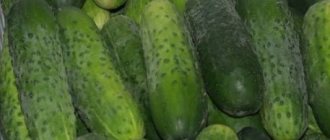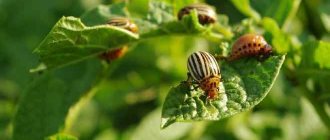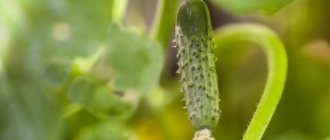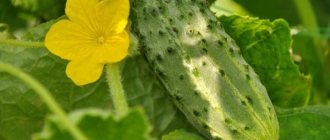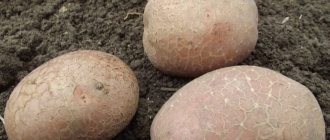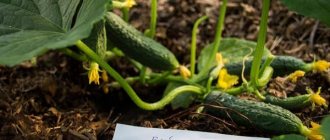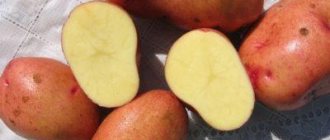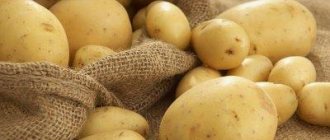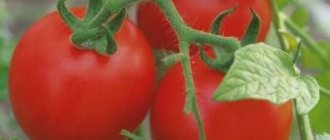What kind of potatoes are these?
The young potato variety Volat is gaining popularity at a rapid pace. This is due to the high yield of the crop, increased resistance and excellent taste of the tubers.
Origin and development
The Volat potato variety is a new crop created by breeders from Belarus. Originator - Scientific and Practical Center of the National Academy of Sciences of Belarus for Potato and Vegetable Growing. It was included in the State Register of the Russian Federation in 2014.
Despite its short lifespan, the variety has already been chosen for commercial cultivation by hundreds of private entrepreneurs and farms. High yields combined with unpretentiousness could not help but attract the attention of those involved in vegetable growing with the subsequent sale of finished products. Farmers note increased consumer demand for vegetables not only in retail trade, but also in wholesale purchases.
Description of the variety and appearance
The purpose of ripe vegetables is for table use, average weight – 90-160 g, oval shape. There are few eyes, they are reddish in color. The peel is yellow, dense enough to protect the fruit from mechanical damage. The pulp is light yellow, the taste is high. Potatoes have a high content of protein, vitamin C (up to 30%) and other useful elements, which determines their nutritional value.
The starch content ranges from 11-19%. Ripe vegetables are ideal for frying and baking. The friability is moderate, so the tubers are often used for boiling and making purees.
Potatoes are purchased by large enterprises for further processing to make chips and fast food products. Vegetables are also used to produce starch.
The variety is suitable for long-term storage, shelf life is 94-96% of the total volume. During long-term transportation, the tubers retain their taste and presentation.
The photo shows Volat potatoes.
Description of the variety
High yield is one of the main advantages of the variety. Farmers harvest about 600 centners of potatoes from one hectare. This makes the Belarusian Volat culture in demand in Russian fields and fields of its closest neighboring states. Full ripening occurs 90–95 days after planting in open ground.
For your information! The harvest consists of beautiful fruits that are resistant to mechanical damage and retain their marketable appearance for a long time.
Disease resistance
The variety is not afraid of diseases such as potato canker, all kinds of viruses, fusarium rot and anthracnose. Immune to golden nematode attacks. Late blight and field mice are also dangerous for Volat potatoes.
What are Volat potatoes?
Characteristics of Volat potato tubers
Volat potatoes are table varieties. The approximate weight of one fully ripened root vegetable ranges from 90 to 160 g. The potatoes are oval in shape, have a dense yellow skin with a small number of reddish eyes. The pulp of the tubers is pale yellow. The starch content does not exceed 19%.
The medium-height potato bush is distinguished by a powerful trunk and a well-developed root system. The foliage of the Volat potato variety is colored juicy green and is medium in size. During the flowering period, small corollas of white flowers appear.
For your information! Russian and Belarusian chefs characterize the taste of Volat potatoes as high-level.
Potatoes can be stored for a long time and transported for a long time. In the process, it does not lose its taste and presentation.
What regions is it suitable for?
The crop takes root well and bears fruit on light, fertile Russian and Belarusian soils, as well as in the fields of Kazakhstan, Ukraine and Moldova.
Taste qualities
In cooking, Volat potatoes are used for frying, boiling and baking. The variety is also suitable for making mashed potatoes, since the finished potatoes become crumbly.
Volat potatoes are used in cooking in many dishes
Note! The main buyers of this variety of root vegetables are large processing enterprises specializing in the production of chips, fast food and starch.
Plant characteristics
The bush is of medium size, the stem is powerful, the root system is well developed. The leaves are medium-sized, rich green in color. When flowering, medium-sized white flowers are formed, collected in neat corollas.
The ripening period is average; tubers reach full technical ripeness 85-95 days after planting . The variety adapts well to drought, but is not resistant to frost.
Plants are immune to golden nematode, potato canker, diseases of viral etiology, fusarium rot and anthracnose. However, the variety does not have resistance to late blight, so preventive measures are needed.
Productivity
Productivity is the main advantage of culture . Up to 600 centners are harvested from 1 hectare, which is an order of magnitude higher than other high-yielding varieties. Therefore, Volat is a welcome guest on numerous Russian fields and in neighboring countries.
All fruits are beautiful, leveled, and resistant to damage. 98% of finished products retain their presentation.
Landing
Seed material is selected during autumn digging. The strongest, most productive bushes are noted in advance, from under which the tubers are taken. The optimal size is 5–6 cm, weight is 50–70 g. If the potatoes are large, they can be cut with a clean knife treated with potassium permanganate. The halves must have at least 3 viable eyes.
Before planting, landscaping and germination are carried out.
Seeds are laid out on the floor, on shelves or in boxes in 2 layers. Maintain a temperature of 15–20 degrees during the day, and 8–10 degrees at night. Sunlight should be diffused; fluorescent lights should be turned on in dark spaces.
Stimulants to improve germination:
- Epin;
- Agate;
- Bioglobin;
- Kornevin.
After 25–30 days, when the sprouts reach a length of 1–2 cm, the potatoes are ready for planting. Sprouted tubers are planted when the soil warms up to 8–10 degrees (test depth is 10 cm).
In the middle zone, the planting date falls on the 3rd decade of April - the first half of May. In the northern regions, planting work begins from the 2nd–3rd decade of May, and in the south - from mid-April.
Optimal planting density:
- 48–52 thousand per 1 hectare - for industrial purposes and sales;
- 55–58 thousand per 1 ha - for obtaining seed material.
How to grow potatoes
The technology for growing potatoes comes down to standard procedures. The crop requires proper watering, timely fertilizing and hilling. The plant quickly adapts to the soil composition and climatic conditions.
Pre-sowing preparation
1 month before planting, tuber preparation begins. The optimal weight is no more than 100 g. Large tubers are pre-cut into slices.
Potatoes are carefully inspected and damaged ones are removed. The remaining seed material is laid out in a bright room for germination. Only sprouted tubers are planted, otherwise there will be no shoots. Optimum room temperature +15…+17°C.
Before sowing, the tubers are treated with a growth stimulator. The drug accelerates the emergence of seedlings and protects potatoes from fungal diseases. The most commonly used are Epin, Kornevin and Bioglobin.
By the end of germination, the tubers may acquire a greenish tint. This indicates an increased accumulation of solanine in the peel. The substance is a glycoside with toxic properties. It is best to plant green potatoes: thanks to solanine, the seed material will be reliably preserved from rodents.
Reference! Field mice are the most dangerous for planted potato tubers.
Dates, scheme and rules of planting
Volat loves light but fertile soil, so it is important to saturate it with useful substances before sowing. It is prepared in the fall by digging with the addition of humus and wood ash. In the spring the procedure is repeated. Digging not only loosens the soil, making it lighter, but also destroys the larvae of parasitic insects and fungal spores.
Planting begins in late April - early May, when the soil warms up to +10°C and the daytime temperature reaches +16...18°C. If there is a threat of return frosts or heavy rains, it is better to postpone planting so as not to ruin the seed.
Planting pattern: 35 cm – distance between holes, 70 cm – row spacing. If these conditions are met, the plants are easy to care for, they are ventilated and receive enough light, which prevents the spread of pathogens.
Potatoes are placed in holes no deeper than 10 cm. A little wood ash is placed at the bottom and sprinkled with soil on top.
Reference! When cutting large potatoes, leave at least three sprouts on each slice, otherwise there will be no sprouts.
Further care
The culture is unpretentious in care and does not require constant attention or a lot of time and effort.
Watering
Seedlings need abundant watering during flowering and fruit formation . But do not forget about the plant’s susceptibility to late blight. Excess moisture promotes the spread of fungal spores and their rapid development.
The best watering is drip. With such irrigation, the roots will not experience a lack of moisture, and the humidity level in the beds will always remain within normal limits.
After watering, loosening is carried out. Loose soil improves oxygen access to the root system, which has a beneficial effect on the development of seedlings.
Weeding beds is a necessary preventative measure in pest control. In addition, the growth of weeds consumes useful elements necessary for the life of seedlings. Weeds are removed with roots, and the beds are mulched. Mulch retains moisture in the beds and prevents the growth of new weeds.
Reference! Peat and straw are most often used as mulch.
Hilling is carried out three times per season. The procedure begins as soon as the seedlings reach 10-12 cm. The soil from the rows is raked onto the seedlings. The higher the hilling is carried out, the more the fruits are protected from sunlight and pest damage.
Feeding
Fertilizing improves crop productivity and strengthens immunity. The first one is applied as soon as the seedlings grow to 20-25 cm. If the growth of the bushes is poor, they are fertilized earlier. To do this, use nitrogenous substances or ammonium nitrate.
The second feeding is carried out at the time of flowering. During this period, seedlings need organic matter. The culture responds well to the application of bird droppings in a ratio of 1:10. The solution is spilled between the rows, after thoroughly moistening the soil.
The third time they are fertilized with a full complex of minerals. This fertilizing is applied 1 week before fruiting. Phosphorus elements and potassium substances are especially effective.
Reference! The introduction of nitrogen accelerates the growth of bushes and the growth of green mass.
Disease and pest control
The most effective and popular fungicide in the fight against late blight is Fitosporin. In addition to therapeutic, it also performs a preventive function. Many gardeners spray seedlings with this preparation from the beginning of planting. This preventive measure guarantees the health of plants in your areas.
In addition to Fitosporin, gardeners use wood ash, which is sprinkled on the bushes. It protects plants not only from fungal diseases, but also from many pests.
To combat the Colorado potato beetle, the drugs “Confidor” or “Prestige” are used, and the insecticide “Aktara” is used to control potato aphids. Another effective remedy is tobacco infusion, the smell of which repels not only aphids, but also whiteflies. The solution is prepared simply: 500 g of tobacco is dissolved in 1 liter of water and boiled for 1 hour. The concentrate is diluted in 10 liters of water and sprayed on the plants.
Reference! The natural enemy of aphids is the ladybug. Plant dill in your area to attract beetles. The ladybug actively destroys aphids until autumn.
Diseases and pests
Significant damage to the crop is caused by diseases such as stem nematode, rot and scab of various types. In most cases, key preventive measures can help prevent potato infections:
- After harvesting potatoes, it is advisable to grow lupins, winter crops, oilseed radishes, and mustard in this area, and then plow the vegetation into the ground for humus.
- It is good to plant types of potatoes that are suitable for the conditions of a given area.
- Fertilizers should be used in a well-rotted form (compost, humus); nitrogen fertilizers should not be used often.
- Gardeners should strive not to injure the tuber during the harvesting period, and those fruits that are spoiled should not be left for long-term storage.
- After harvesting, all potato tops must be dried and burned.
- It is recommended to create the necessary conditions in order to preserve potatoes with optimal temperature, humidity and good ventilation in the vegetable storehouse.
The description states that this species bears fruit well for many years and, with proper care, is not damaged by common diseases and pests. But the description of the variety also states that certain microbes can change the lifespan of potatoes. If ordinary potatoes or other vegetables that are not resistant to viruses grow in nearby beds, then viruses and insects have every chance of getting into your garden from this area along with aphids.
Inspection of landings
You should carefully examine all the bushes without exception when the plant grows 10-15 cm long and select those with curled leaves. Their fruits can be used as food, but should not be used as seeds. Plants with microbes have fewer tubers, for this reason it is necessary to separate only those bushes for seeds that have a significant yield. If you adhere to basic requirements, you can significantly extend the life of this variety.
To protect against diseases, the method of combining germination with dusting wood ash before planting seeds has proven itself well. Wood ash contains a large amount of microelements required for the growth and formation of culture.
To dust 50 kg of potatoes, a total of one kilogram of ash will be required. If you notice that you do not have enough ash, the tuber can be treated with solutions of mineral fertilizers before planting. For this purpose, before planting, the tubers are sprayed with a solution of nitrophoska (ten grams per liter of water), ammonium nitrate (fifteen grams per liter of water) or boric acid (one gram per liter of water).
Collection, storage and use of crops
Before harvesting, it is advisable to mow the tops. The foliage is burned because it may contain pests.
Potatoes are dug up with a pitchfork or shovel, then left on the site for 2-3 hours to dry completely. The harvest is then placed in wooden boxes for storage. The room chosen is dry and cool.
The shelf life of the finished product is high; almost the entire harvest retains its presentation until spring.
Ripe tubers are used in cooking as widely as your imagination dictates. The fruits are ideal for preparing any dish, including baking and stewing.
Large enterprises purchase potatoes for further processing and production of chips and fast food. The tubers are also used to make starch.
This is interesting:
What are the dimensions of the largest potato in the world and who grew it.
Mid-early resistant potato variety "Satina".
How to harvest and store crops
Potato harvesting begins after the tops are mowed. The cut foliage is burned to rid the plants of the pests that have settled there.
Potatoes are dug up using a fork or shovel. The harvested crop is left in the garden to dry. After 2–3 hours, the dug potatoes are transferred to a wooden container and stored in a cool, dry room.
Potatoes are best stored in the cellar
Thanks to the excellent keeping quality of Volat potatoes, the crop, collected and stored for storage in accordance with the instructions above, will be stored until spring without losing its presentation.
Advantages and disadvantages
Among the many advantages of the Volat variety:
- possibility of breeding in all regions;
- adaptation to drought and soil composition;
- possibility of quick implementation;
- ease of care;
- high resistance;
- increased productivity;
- excellent taste of fruits;
- long preservation of presentation;
- duration of transportation;
- universal application.
One of the negative qualities is susceptibility to late blight.
For which regions is it best suited?
The culture has become widespread in Russia, Belarus, Kazakhstan, Ukraine and the Republic of Moldova. But it is preferable to plant the variety in regions with light and fertile soil.
Farmer reviews
Reviews about potatoes come not only from Russian gardeners, but also from neighboring countries. Here are some opinions:
Ilya, Minsk: “From the characteristics of Volat potatoes it follows that all agricultural technology comes down to several standard procedures. The way it is. I am a farmer, I have been growing vegetables for a long time, and minimal costs for cultivating fields are very important to me. Ripe vegetables are in excellent demand. The taste of potatoes is amazing, so I not only sell the harvest, but also definitely keep it for the winter.”
Ekaterina, Moscow: “Last year I saw a photo on the Internet, read the characteristics and decided to plant it on my site. I have a small garden, so I always wanted a productive crop. Volat did not disappoint. There were a lot of potatoes, all smooth, beautiful and tasty. I recommend it to everyone."
Dutch potato varieties: description, photo
Once on Yandex Zen channel about my 5 varieties of potatoes . After that, a whole epic began in the comments. Many gardeners began to share their varieties, productive and tasty. I decided to review the best based on the comments and it turned out to be 4 articles, one was not included
